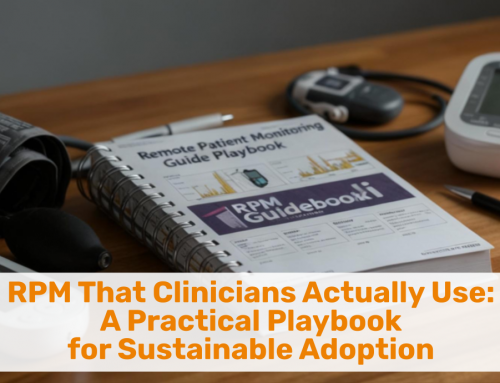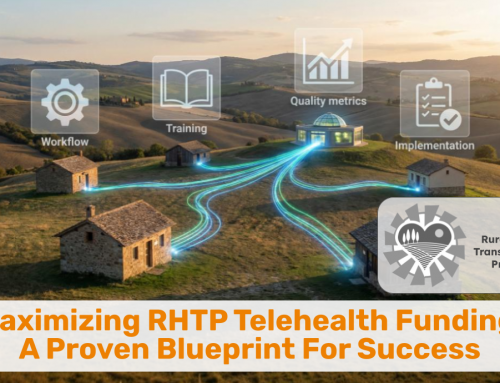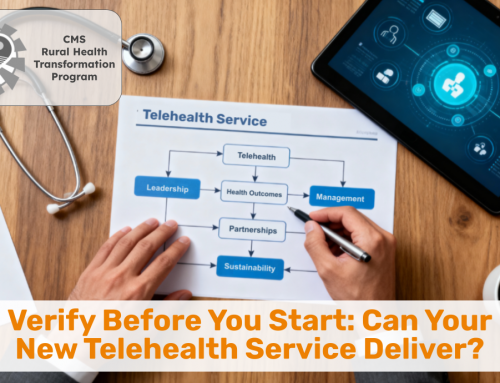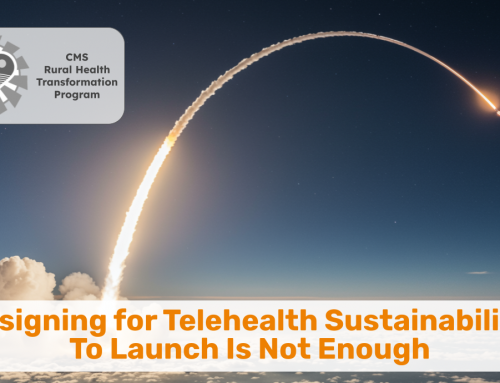Imagine needing medical care—but there are no roads, no bridges, and weather conditions can delay travel for days.
For residents of islands, even if they are just off-shore, but with no bridge connecting them to the mainland, this isn’t a hypothetical. It’s everyday life.
Serving communities just like off the coast of Maine is Seacoast Mission, a remarkable organization that I just started working this year through my colleagues at MCD Global Health, host of the Northeast Telehealth Resource Center. With their boat, the Sunbeam, Seacoast Mission provides vital care to year-round resident of Maine’s island communities where access to a doctor can mean a ferry ride — if the boat can make it.
In these settings, telehealth isn’t just convenient. It’s critical.
But setting up virtual care in such environments comes with a unique set of challenges. In preparation for a workshop with five healthcare provider organizations this week, this article explores what it takes to build a sustainable, patient-friendly virtual care system for even the most geographically distant communities.
Connectivity Is Only the Beginning: Challenges in Remote Settings
Many near-coast islands now benefit from some level of cellular internet, though service can be spotty and signal strength inconsistent. Satellite internet is becoming more widely available, offering a backup solution — but both are vulnerable to weather disruptions and power outages, especially in communities that rely on off-gride power.
Even getting equipment onto an island requires coordination. In bad weather, safe passage can be delayed for days or even weeks. In winter, entire communities may be effectively cut off for weeks on end. These logistical realities present the first challenges to consider how telehealth services are designed and deployed.
Designing for Success: Infrastructure and Technology Considerations
Economically it makes sense in small island communities, to establish a more permanent telehealth infrastructure in central locations — such as libraries, post offices, or community centers. On most islands, travel distances are typically not a hurdle and community-owned and community-supported telehealth access points can create equitable access to care for all residents. Local staff can be trained as “tele presenters” to help patients log into a patient portal or join a provider’s virtual waiting room.
When real-time video isn’t feasible, asynchronous care — such as secure messaging, image uploads, or remote monitoring of vital signs — can still provide continuity of care. Even audio-only visits are still better than no visit, especially if vital signs such as blood pressure, temperature or glucose readings are available.
For the management of patients with chronic diseases or post-discharge monitoring, remote patient monitoring (RPM) tools, such as cellular-connected blood pressure cuffs or glucometers typically only use minimal bandwidth, though they do require periodic connectivity for transmitting data at least on a daily basis.
People Power: Workflow & Staffing on the Ground
One key ingredient to telehealth success are the workflows and the people that bring those processes to live.
More so than in any other environment, staffing can make or break a remote telehealth program. Training local personnel as telehealth presenters, digital health navigators or community health workers not only empowers residents — it builds trust.



The Seacoast Mission Boat “Sunbeam”
In the case of Seacoast Mission, their nurse travels aboard the Sunbeam and conducts in-person vital sign checks, including accurate BP readings. This hybrid approach — combining in-person touchpoints with virtual visits — maximizes reliability without overburdening islanders.
Well thought-through workflows, especially right before the visit, are also key. To confirm connectivity and logistics, clinics should consider pre-visit check-ins 15-30 minutes before the appointment, so as to not waste the clinicians time. In areas with unreliable service where time windows of reliability are known, scheduled visits during those times often work better than on-demand options.
And when a patient needs urgent care? A telehealth provider can still play a vital triage role: determining whether the situation calls for an evacuation via helicopter, patient- or community-provided transportation, or coordination with other local resources like the Seacoast Mission. Just like a stitch in time saves nine, a quick virtual check-in can prevent deterioration — and save lives.
Looking Ahead: Innovation on the Horizon
Many Native communities living in remote areas in Alaska and Canada have long relied on telehealth as a core healthcare delivery model. What was once cutting-edge has become routine in some of the most rugged environments in the world.
Globally, we’re also seeing innovation in motion: drone-based medical delivery of drugs and blood products in parts of Africa but also solar-powered fridges for vaccine storage are changing what’s possible for people in even the remotest areas.
With each advancement, the vision of accessible care for all—even in places without bridges or broadband—becomes more achievable.
Equity Beyond the Mainland
When we talk about telehealth, it’s easy to focus on convenience or on the challenges of rural transportation, working two jobs or having to find child care. But in places like the unbridged islands of Maine, it’s about equity. The ability to access care shouldn’t depend on a ferry schedule or weather forecast — or even your desire to reside on an island.
By designing systems that account for real-world conditions, collaborating with community partners, and staying flexible in both technology and workflow, we can ensure no patient is left behind — no matter how far off the map they live.
Do you need to set up a workflow for bringing care to remote locations? Reach out to me so I can share with you what we have learned.








To receive articles like these in your Inbox every week, you can subscribe to Christian’s Telehealth Tuesday Newsletter.
Christian Milaster and his team optimize Telehealth Services for health systems and physician practices. Christian is the Founder and President of Ingenium Digital Health Advisors where he and his expert consortium partner with healthcare leaders to enable the delivery of extraordinary care.
Contact Christian by phone or text at 657-464-3648, via email, or video chat.






